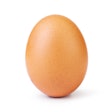
Egg producers in the U.S. are facing numerous issues in converting to cage-free production while, at the same time, having to respond to high expectations from consumers.
What the egg industry does and doesn’t know about cage-free production was the focus of Dr. Janice Swanson, Professor, Department of Animal Science and Large Animal Clinical Sciences with Michigan State University, speaking at the 2022 Midwest Poultry Federation (MPF) Convention in Minneapolis. Her presentation sought to address specific issues that had been raised by producers.
This article will focus on what the industry knows about cage-free production.
Deadlines
Cage-free production is growing at a steady rate. However, the realization that egg producers will not be able to meet cage-free state mandates and purchase pledges has become clear. In a survey conducted by WATT Global Media at the beginning of 2022, it was predicted that 51% of U.S. table egg-laying hens will be housed cage free in 2025, which is the deadline for many state and company pledges.
“This delay has a lot to do with producers’ abilities to get the appropriate loan amount, site approvals and other complicating factors people may not think about when a producer is trying to convert to cage-free,” stated Swanson.
Nest design
According to Swanson, we know that nest design matters.
“It’s well known that hens desire dark areas to collect in, meaning that curtain length and coverage in the nesting area is very important,” she said.
Gaps of light or views of other birds through the curtains could lead to the hens not settling into the nesting area and wanting to lay eggs elsewhere.
Confidence
We know that the longer producers are working in cage-free houses, the more confident and competent they are becoming working in that environment, leading to lower mortality rates compared to when cage-free conversions were just beginning, explained Swanson.
Want to find out what the egg industry doesn't know about cage-free production? Click here.


















